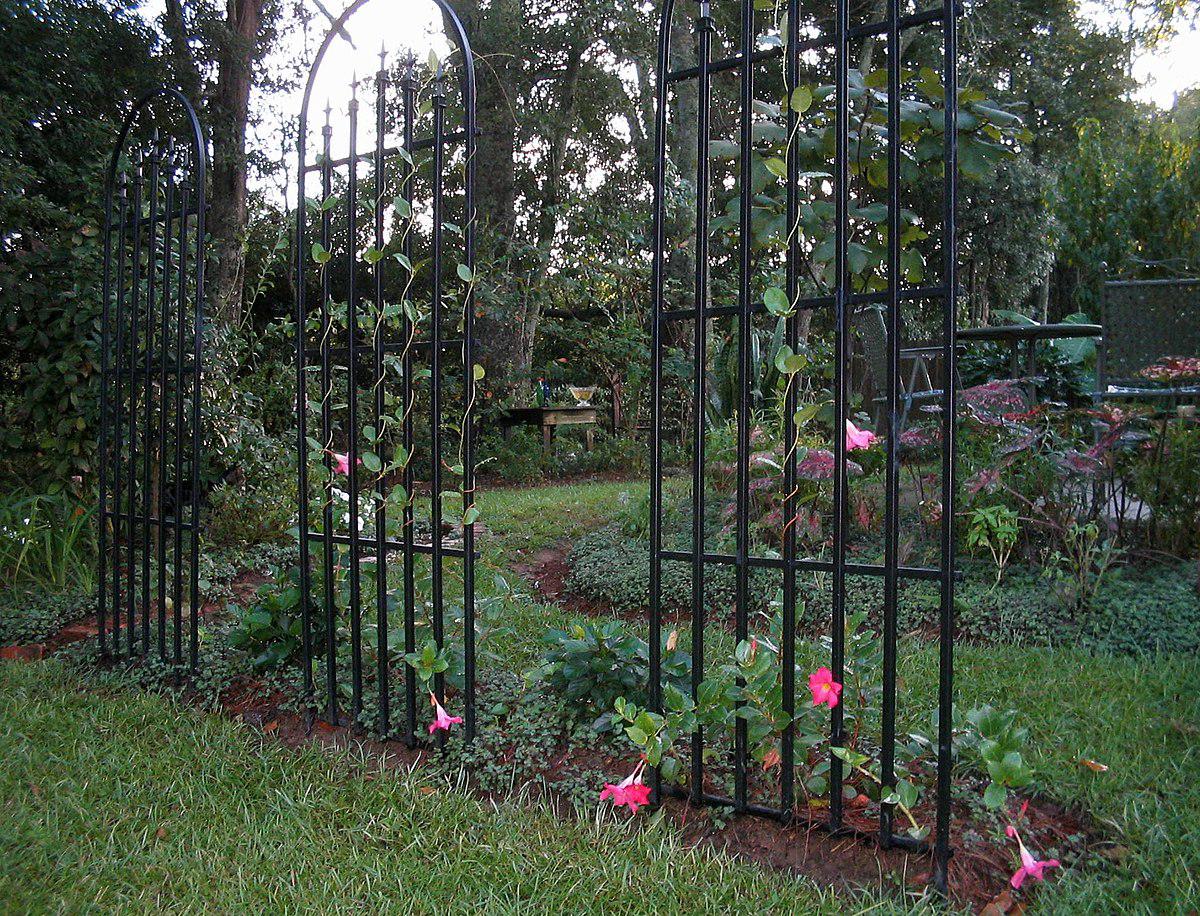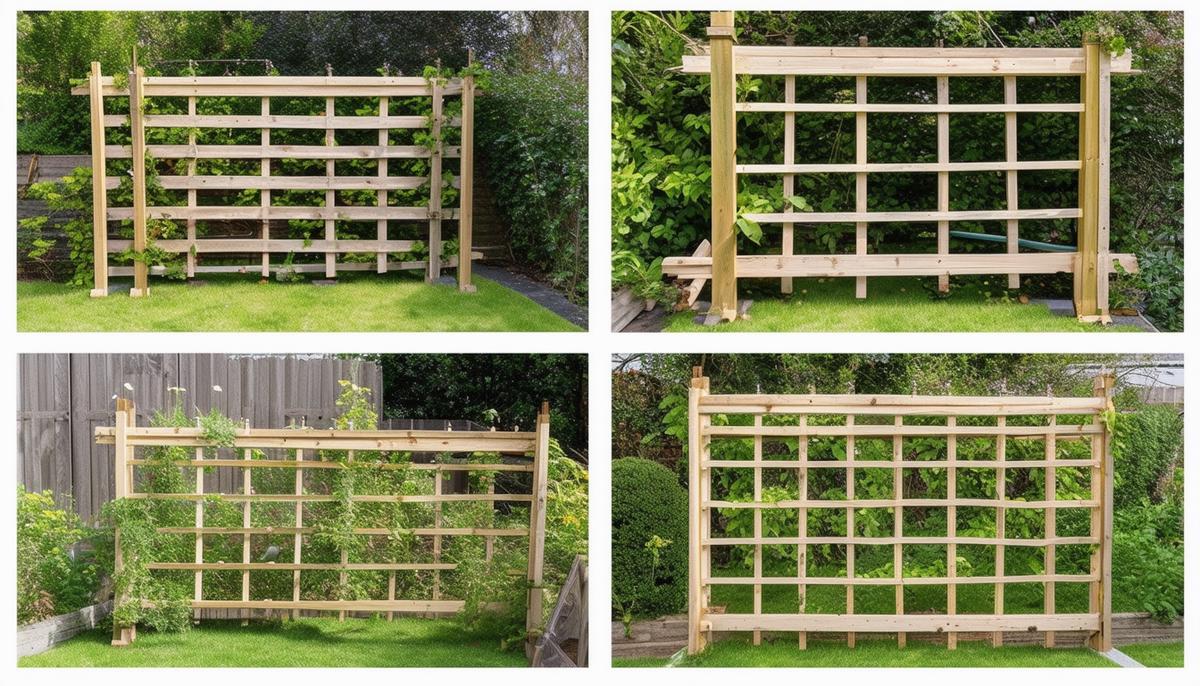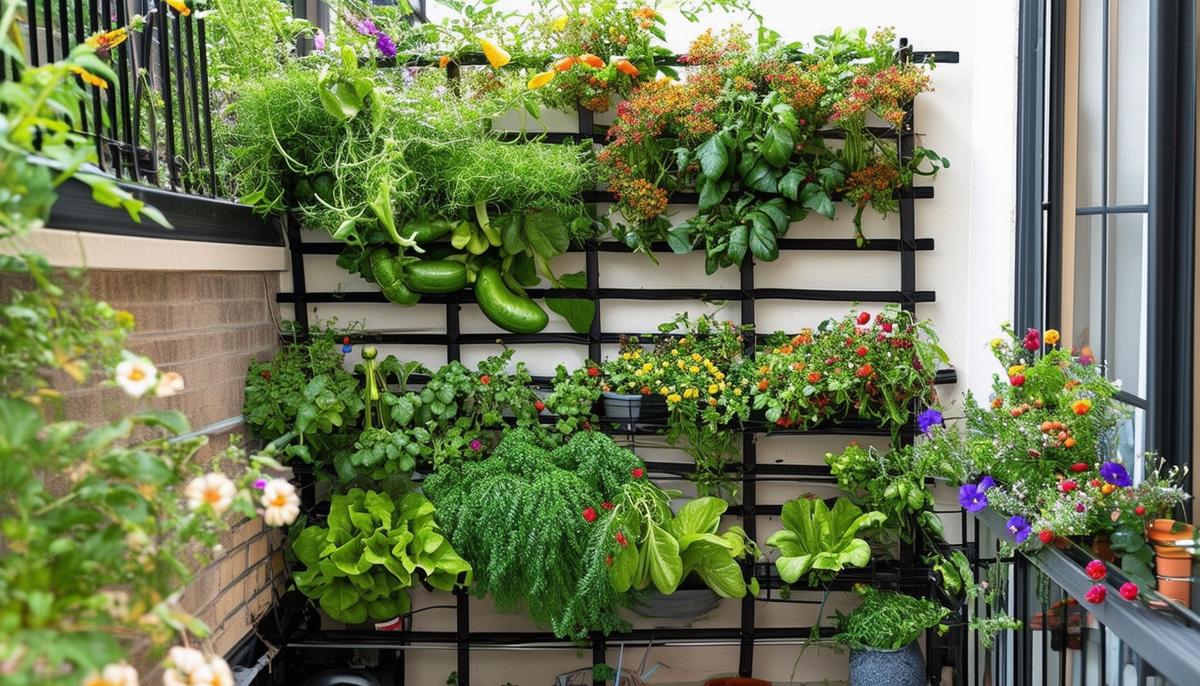Selecting Materials
Wood, metal, PVC, and bamboo are popular choices for garden trellises. Each has its strengths:
- Wood is versatile and natural-looking. Cedar and redwood resist weather well. Choose weather-treated types for longevity.
- Metal offers durability and sleek aesthetics. Galvanized or stainless steel provides sturdiness without rust, ideal for windy conditions.
- PVC is cost-effective and long-lasting. It's weather-resistant but can be painted to improve appearance.
- Bamboo is eco-friendly and affordable. To prevent rot, raise it above soil and apply occasional sealant.
Consider your local climate when choosing materials. Cedar suits wetter regions, while steel thrives in sunny gardens. Match materials to your garden style—streamlined steel for modern looks or weathered wood for rustic charm.

Design Variability
Simple wooden lattice structures efficiently support lightweight climbers like clematis or morning glories. They're easy to build and provide ample growing space.
Obelisk designs stand tall and add sophistication. They support denser plants like wisteria or climbing roses.
Arched trellises create inviting pathways and are ideal for heavier growers like grapevines.
A-frame trellises benefit plants like tomatoes and cucumbers, allowing upward growth away from damp ground.
When selecting a design, consider:
- Plant weight
- Climbing habits
- Integration with garden decor
Balance functionality with style to make your garden thrive and impress.

DIY Construction Tips
- Start with accurate garden space measurements to ensure your trellis fits well without crowding plants.
- Cut materials precisely. Whether using cedar, PVC, or bamboo, accuracy is crucial.
- Assemble the frame with a solid base, then add uprights and crossbars, securing each joint. Focus on stability for your climbing plants.
- Add decorative elements like finials or paint to match your garden's style, ensuring they don't compromise functionality.
- Secure your trellis firmly to resist weather. Use stakes or mounting brackets to prevent storm damage. If freestanding, give it a slight lean for natural balance.
Building a trellis requires careful planning and creativity. The result will be a structure that proudly supports your garden for years to come.

Choosing appropriate materials and design for your garden trellis is essential. It's about balancing functionality and style, ensuring your plants have proper support while enhancing your outdoor space.
"A trellis is a timeless way to create architectural interest in a garden, as well as showcase a plethora of flowering vines," explains designer Kristina Phillips.
Remember, trellises aren't just for traditional gardens. With vertical growing, you can add cucumbers or other climbing plants to patios, balconies, or even container gardens. The possibilities are as endless as your imagination!

- Costello SR. Urban jungle: Transforming walls with trelliswork. Architectural Digest. 2021.
- Parker J. Modern trellises in landscape design. Landscape Architecture Magazine. 2020.
- Phillips K. Garden structures: Elevating outdoor spaces. Home & Garden. 2022.
